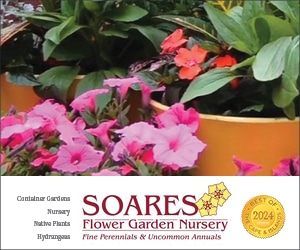
2018 Annual Guide: Provincetown
Cape Cod Life / 2018 Annual / Art & Entertainment, Food & Dining, People & Businesses, Recreation & Activities
Writer: Cape Cod Life Publications / Photographer: Paige Biviano
2018 Annual Guide: Provincetown

Cape Cod Life / 2018 Annual / Art & Entertainment, Food & Dining, People & Businesses, Recreation & Activities
Writer: Cape Cod Life Publications / Photographer: Paige Biviano

MacMillian Pier, Provincetown Harbor. Photo by Roupen Baker
Photo Ops:
MacMillan Pier can’t be beat for its collection of authentic fishing boats—come early in the morning when the light shimmers on the water as the boats head out. The famed dunes offer unusual views that will challenge your photography skills, and you’ll want to get a good shot of a brilliant sunset at Herring Cove.

Pilgrim Monument. Photo by Michael Mattox
Favorite Spots:
We can’t get enough of the Pilgrim Monument and Provincetown Museum, a must-see attraction overlooking busy Commercial Street. The view is well worth the 116 steps and 60 ramps to the top of the monument, and at its base is a fascinating museum.
Mom & Pops:
There are lots of great places to go for coffee in Provincetown, but the Wired Puppy is one we can’t stay away from. Bring your coffee outside to one of the benches out front and watch the world go by on Commercial Street.
Don’t Miss!
Explore the amazing art here during the Friday Night Gallery Stroll, when galleries open their doors, pour wine and talk art. In the off-season, November to spring, a Monday night Coffeehouse at the Mews highlights local performers in a fun open-mic session for playwrights, poets, singers and comedians.

Charles “Stormy” Mayo. Photo by Paige Biviano
A day in the life of: Stormy Mayo, founder and director of the Right Whale Ecology Program, Center for Coastal Studies
By Kristina Atsalis
Since the 1600s, there has been a member of the Mayo family living in Provincetown. That tradition is currently upheld by Charles Mayo, Ph.D., who has answered to the name “Stormy” since early childhood—a name befitting a child born on his father’s schooner in the midst of a storm. Mayo now has a 20th-century-style schooner of his own, which can be seen in the water at Macmillan Pier bearing the same name as his father’s: Istar.
The story behind Mayo’s handcrafted wooden schooner is well known in the local community, as is the history of Mayo fishers and whalers, but Stormy Mayo has added a new dimension to the family name: He is internationally recognized by the scientific community for his development of disentanglement techniques used to free right whales ensnared in fishing gear and for his ongoing research on the ever-dwindling population of this rare creature. He is director of the Right Whale Ecology Program at the Center for Coastal Studies, which he founded in partnership with his late wife, Dr. Barbara Shuler Mayo, and their peer, Dr. Graham Giese, in 1976.
Mayo’s ecological career began in Miami, where he chose to research zooplankton, one of the most fundamental and abundant sources of food in the oceanic ecosystem. Making the switch from observing a microscopic organism with a booming population to a near-extinct 50-foot mammal may seem disjointed, but the two are tightly intertwined, as North Atlantic right whales come here to feed on the abundant plankton in Cape Cod Bay.

Photo by Paige Biviano
“It’s the best of both worlds,” says Mayo. “When I am studying right whales, I am also studying plankton. Whether we are charting population distribution, breeding grounds, habitats or migratory behaviors, the quantity and quality of their principal food source is always going to be recorded and considered as an important health factor.”
Mayo points out that the outlook for these rare whales is bleak, given a decrease in birthing rates and an increase in mortality rates. The latter is predominantly a result of ship collisions and entanglement in fishing gear, both human causes.
There is a great deal that Mayo and his team of aerial photographers, pilots and boat crew do not understand; most notably, the team is working to determine the ideal characteristics of an ecosystem that could support a stable right whale population.
The Center for Coastal Studies will continue to document right whale behavior, climate conditions, and ecological conditions in Cape Cod Bay, and Mayo will continue to speak publicly and candidly about right whale conservation.
In addition to being seafarers and scientists, Mayo has added a third component to the family legacy: caring for his garden of dahlias. He started planting dahlias the year his first wife died; they were her favorite flower, and he could think of nothing else to do. Now they are an integral part of his summer days.
His yard blooms with several hundred hybrids of dahlias, with different color combinations, petal shapes, heights and sizes, all of which demand high-maintenance cultivation throughout the year. He maintains a separate bed of dahlias on Bradford Street for the enjoyment of locals and visitors.
“I am, in the simplest of terms, a fanatic,” he says. That’s a good thing for the dahlias—and the whales.
Kristina Atsalis is an editorial intern for Cape Cod Life Publications.




